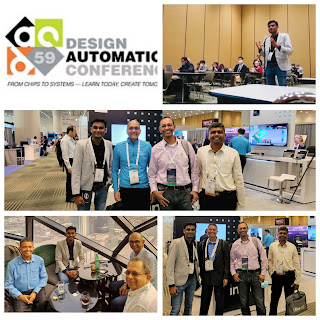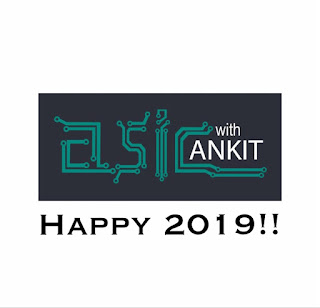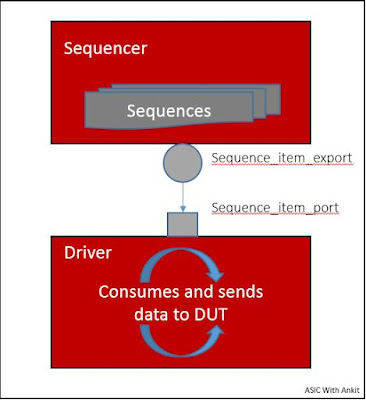System Verilog has different types of arrays that you can
randomize to generate interesting scenario for the test bench you are working
on. In SV we mainly have static array ,dynamic array and also queues that you
can randomize, Lets deep dive in to each one of them to understand how you can
use it with system Verilog:
Static Arrays:
class my_static_array;
rand bit [3.0] my_array [8];
endclass
module my_testbench;
my_static_array my_static_array_obj;
initial begin
my_static_array_obj = new ();
my_static_array_obj.randomize();
$display (“my randomize value =%p”,
my_static_array_obj.my_array);
end
endmodule
In above example, we have my_array declared as static array
which is declared as rand so that you array will be randomize when you do class
object.randomize in your module to generate random value for our static array,
You can play around with this example by changing different seed to how it
changes the random value w.r.t to different seed.
Dynamic Array:
As we know, Dynamic arrays are the array for which size will
not be pre-determined during the declaration. Dynamic array declaration will
have square bracket [ ]. Lest deep dive in to example to better understand its
declaration and how you can randomize it:
class my_dynamic_array;
rand bit [7:0] my_array [] //dynamic array
//Adding some constraint to this array so we can constraint
array during randomization
constraint c1 {my_array.size >2 ; my_array_size <=10;}
//Constraint each array index value to be equal to index+1
constraint c2 {foreach (my_array[i])
my_array[i] = i+1;
}
function void print_value ();
foreach (my_array[i])
$display(“my array value
my_array[%0d] = 0x%0h”, i, my_array[i] );
endfunction
endclass
module my_testbench;
my_dynamic_array my_dynamic_array_obj;
initial begin
my_dynamic_array_obj = new(); //create a
memory for the class object
my_dynamic_array_obj.randomize();
//randomize class with constraint provided
my_dynamic_array_obj.print_value (); //calling
function from class to print array value
end
endmodule
Try this example and play around by changing constraint for
index value, array size and seed to see how it changes the value to create
corner scenario.
Queue randomization
We can have a queue declared as rand and then later in test
bench you can randomize the queue to create a random value generate from the
queue elements, We can constraint and limit the queue size in the constraints.
Lets deep dive in to the example to better understand declaration of the queue,
how you can limit and constraint the size of the queue and how you can randomize
the queue to generate random behavior for your test bench:
class my_queue_c;
rand bit [3:0] my_queue [$] // Queue declaration with rand
to randomize it later
//constraint to limit the size of the queue
constraint c1 {my_queue.size() == 5;}
endclass
module my_testbench;
my_queue_c my_queue_c_obj;
initial begin
my_queue_c_obj = new ();
my_queue_c_obj.randomize ();
//Print values
$display(“my queue value =%p”,
my_queue_c_obj.my_queue);
end
endmodule
Try this example and play around by changing constraint to
change size of the queue and seed to see how it changes the value to create
corner scenario.
Hope, this is useful simple example to understand
randomization of arrays. Stay tuned for more simple but exciting post to learn
System Verilog.
Keep reading and keep learning, stay tuned for more simple but exciting learning posts
-ASICWithAnkit


























